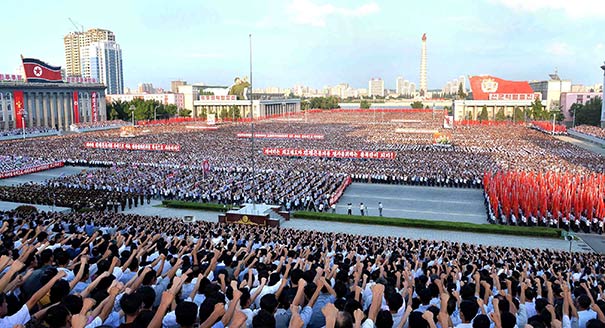Source: New York Review of Books
After six years in which he never traveled outside his country, never met with a foreign head of state, and maintained relations ranging from frosty to terrible with South Korea, China, and the United States, Kim Jong-un opened up to all three of those countries over three stunning weeks in March. He established a direct line of communication with the South for the first time in eleven years, scheduled an April meeting with South Korean president Moon Jae-in, invited President Trump to a summit meeting currently planned for May, and then traveled secretly to China for meetings with Chinese president Xi Jinping.
In all likelihood, Kim has emerged from his seclusion because of the rapid advance of North Korea’s nuclear and missile programs. In 2017 twenty missile tests followed one another in quick succession. During the year North Korea demonstrated that it had both mobile and solid-fuel missiles. (The latter can be readied for launch much more quickly than liquid-fuel models and are therefore harder to target and destroy.) The climax came in the fall. On September 3, North Korea tested a weapon that US experts have concluded was a hydrogen bomb. Two months later, on November 28, it successfully launched a new intercontinental ballistic missile with a range of 8,100 miles, and thus able to reach anywhere in the United States. North Korea has not yet shown that it can build a missile warhead capable of surviving the stresses of atmospheric reentry, but that appears to be its only remaining technological hurdle.
In addition to an unknown number of nuclear weapons, North Korea has an arsenal of chemical weapons and at least some of the advanced equipment needed to produce biological weapons. The discovery of antibodies to anthrax and smallpox in the blood of North Korean defectors indicates that the country has produced these two agents. It has possibly worked with cholera and plague as well. Satellite photographs taken in January and February suggest that a nuclear reactor may now be producing plutonium. Kim may be balancing diplomacy with a not-so-subtle reminder of his commitment to nuclear weapons, or adding a bargaining chip to his pile...
This piece was originally published in the May 10 issue of the New York Review of Books.





